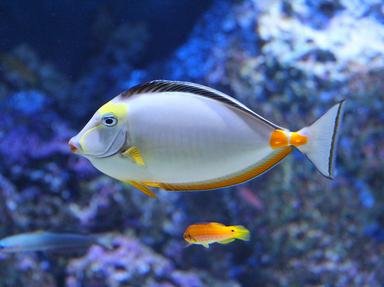Quiz Answer Key and Fun Facts
1. According to most scientists, in what way does having a hammer-shaped head help a hammerhead shark?
2. Sawfishes, a type of ray, look very similar to sawsharks. Which of the following is NOT a way to tell the difference between the two?
3. Which species of sturgeon, the only commercially fished type in the U.S., has a name that includes a tool for digging?
4. Swordfish use their long, sword-like nose to impale their prey.
5. The knifejaw's mouth is often compared to the beak of which of these birds?
6. Which of the following is NOT a species of wedgefish?
7. The rarely seen giant oarfish holds which of these records?
8. There are many species of knifefish, which can produce electric fields. Are electric eels a type of knifefish?
9. This nightmarish creature is a marine hatchetfish, which has a similar kind of appearance to other fish that live in the same part of the ocean as them. Where are they found?
10. There are two species of paddlefish, the American paddlefish and what other one?
Source: Author
zebra101
This quiz was reviewed by FunTrivia editor
guitargoddess before going online.
Any errors found in FunTrivia content are routinely corrected through our feedback system.


